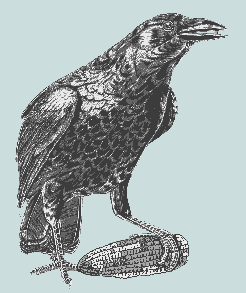

|
|
|
|
Phoenician ships carried their trade westward to the Mediterranean coasts and islands, sometimes substituting slave raiding or piracy for trading, according to which yielded the best profit.
Motivated perhaps by the pressure of an expanding population, the Phoenicians established scores of colonies throughout the Mediterranean. They founded Gades (Cadiz) on the Atlantic side of southern Spain, and settlements in Malta by 700 BC, and Massalia (Marseilles) by 600 BC. They established their colony of Utica (in present-day Tunisia) at about the same time as they built Gades. They may also have reached the Canaries and the west coast of Africa and sailed round Spain to Cornwall, although Lord Leighton's famous painting showing Phoenician merchants visiting Britain (kept in the Royal Exchange, London), like so many nineteenth-century ideas about the Phoenicians, is unsupported by evidence.
In 842 BC Assyrian armies captured the cities of Phoenicia, which then declined in influence and prosperity. In Phoenician tradition, Dido, a princess of Tyre, led a mass emigration from that city westward in search of a new home. Traditionally she founded Qart Hadasht (New Capital), which we call Carthage, in 814 BC. According to legend, Dido acquired the site for Carthage by a trick of bargaining worthy of the daughter of a Phoenician merchant-prince. She struck a bargain with the existing inhabitants for a piece of land on a hill, as big as could be covered by an ox hide. Cunningly, Dido sliced the hide into thin strips and strung them out end on end to encircle the base of the whole hill, which she then claimed as the area agreed in the bargain.
The Phoenicians chose the site for Carthage carefully, and constructed its harbour skilfully. The harbour had two sections connected by a narrow channel: a roughly rectangular outer harbour about 500 m by 300 m, and a roughly circular inner harbour about 300 m in diameter. The inner harbour was kept for ships of war. On an island near the centre of the inner harbour was the naval headquarters, a tall building which afforded an unobstructed view of the sea. But the secrets of the naval harbour were cunningly hidden from the prying eyes of visiting foreigners by a high double wall. More than 200 warships could be docked in the inner harbour. Ships entered both harbours direct from the sea through a single entrance about 20 m wide, which for security could be closed with heavy chains.
The oldest district of Carthage contained the citadel. Between the citadel and the port lay a great public square similar to a Roman forum. The Carthaginian Senate stood near this square. The main city was a maze of narrow, winding streets, crammed with houses up to five or six storeys in height.
The main city covered about 80 square kilometres, and its 35 km boundary as protected by a massive wall. Not until the last day of Carthage was this wall penetrated, and then only at great cost of life by invading Roman soldiers. One vital section of this wall stood about 120 m high and 10 m thick and was surmounted by tall military towers. Within the wall at ground level 300 elephants of war were stabled. At a higher level, approached by ramps, were stables for 4 000 horses. About 20 000 infantry and 4 000 cavalry soldiers guarded the city, and lived in barracks also built in the wall. Cunningly constructed ramparts and also a 20-metre-wide trench guarded the approaches to the outer wall.
Like their Phoenician ancestors, the Carthaginians were sea-going townsmen who lived by trade and piracy, and had little time for artistic and cultural activities. They tilled the land beyond the city and by the sixth century BC brought more than 50 000 square km of Africa under their control. The crowded city contained up to about 200 000 people, but the whole territory of Carthage had a population of perhaps 700 000. Continuing their Phoenician tradition, the Carthaginians gradually planted colonies in the western Mediterranean and in time brought Sicily and the greater part of Spain under their control.
The Greeks and Romans had a poor opinion of the Phoenicians generally, and the Carthaginians in particular. This may have been prejudice based on jealousy of trading rivals in the case of the Greeks, who certainly admired the Carthaginians' constitutional organization (of which few details have survived) and it may have been fear of a powerful enemy in the case of the Romans. But the Carthaginians did value human life cheaply, inflicting cruel tortures not only on their enemies but on their own people, too, often in the name of religion.
Navigation |
||
|
|
Introduction | The Phoenicians |
|
|
Page 2 | Fortified Cities |
|
|
Page 3 | Dido and the ox hide |
|
|
Page 4 | A terrible religion |
|
|
Page 5 | Sacrifices to Tanit |